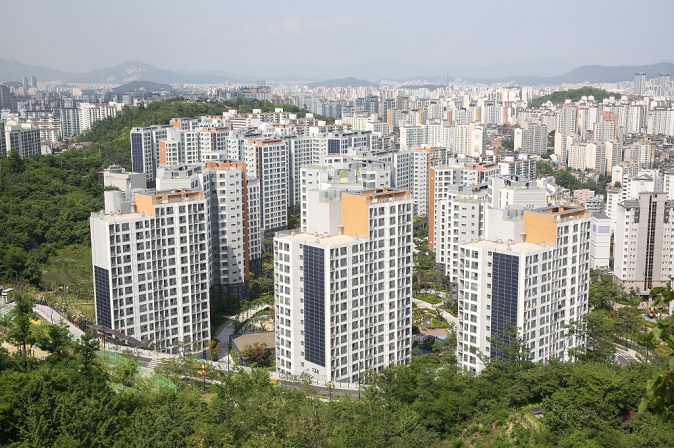SEOUL, Aug. 23 (Korea Bizwire) — About one-third of households in South Korea with members in their 30s and 40s, along with children, purchased their initial home before marriage, a government think tank said Tuesday.
The Korea Research Institute for Human Settlements conducted a survey involving 3,042 households whose members fall within the age range of 30 to 49 and have children.
The survey revealed an average of 1.8 children per household. Among these households, 44.2 percent in Seoul and 38.1 percent across five metropolitan cities and Sejong had a single child.
Their average monthly earnings amounted to 5,146,000 won (US$3,840), with 56.5 percent consisting of dual breadwinners.
The prevalence of households with dual breadwinners was notably higher outside major metropolitan areas (59.7 percent) and within Seoul (58.8 percent).
Overall, 62.6 percent of households with members in their 30s and 40s, who are also parents, possessed their own homes.
However, only 44.5 percent owned homes in Seoul, with 34.3 percent of them purchasing their initial home before marriage.
“In the past, more individuals used to marry after acquiring a home. Yet, in recent years, fewer people have managed to purchase homes due to escalating real estate prices. A larger number of individuals are presently residing in deposit-based housing,” the institute said.
A majority of households (77.8 percent) comprising members in their 30s and 40s with children mentioned that they reside in apartments. The percentage was lower in Seoul (63.3 percent) compared to other metropolitan cities (over 80 percent).
Survey participants identified their children’s education (32.4 percent) as the foremost factor influencing their current housing choice, followed by housing and rental costs (24.4 percent) and proximity to their workplace (17.1 percent).
For those with higher incomes, the educational environment for their children held greater priority.
Meanwhile, among individuals with lower incomes, the cost of housing carried more significance.
H. M. Kang (hmkang@koreabizwire.com)







